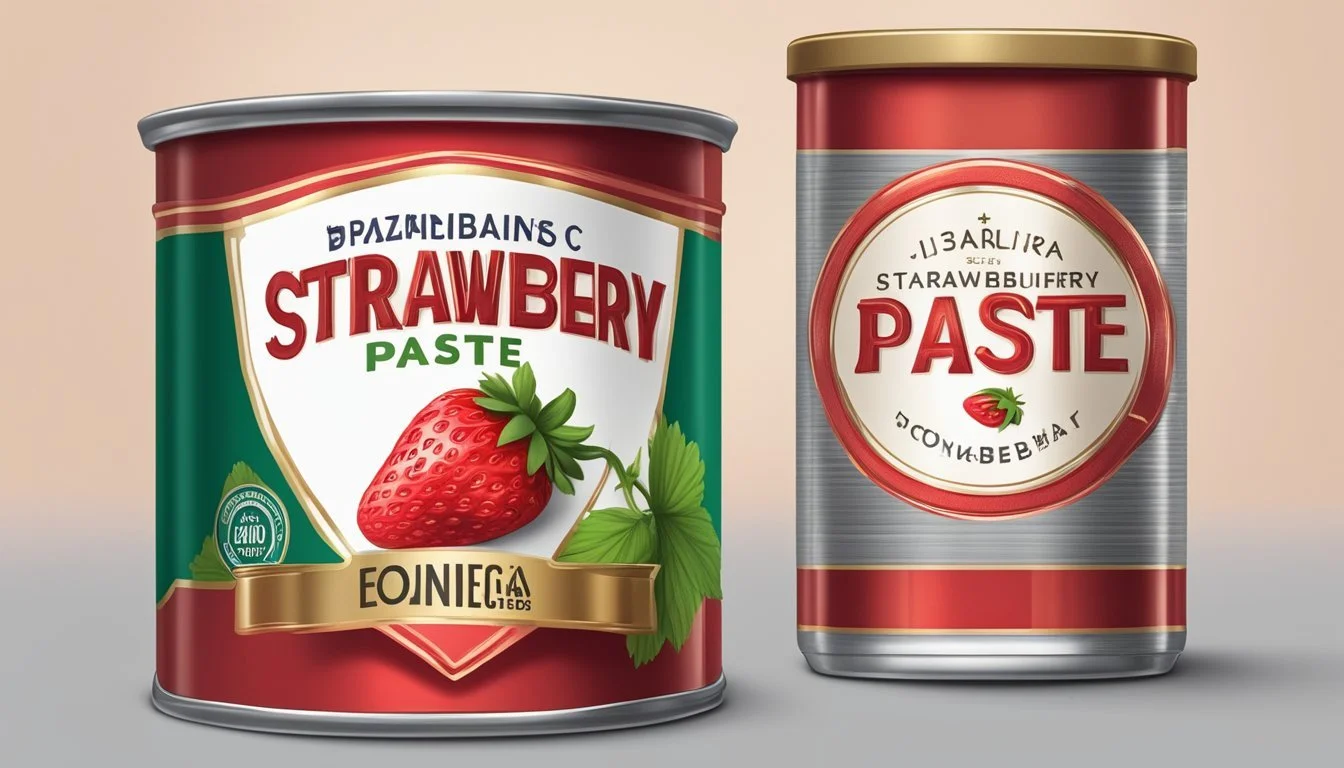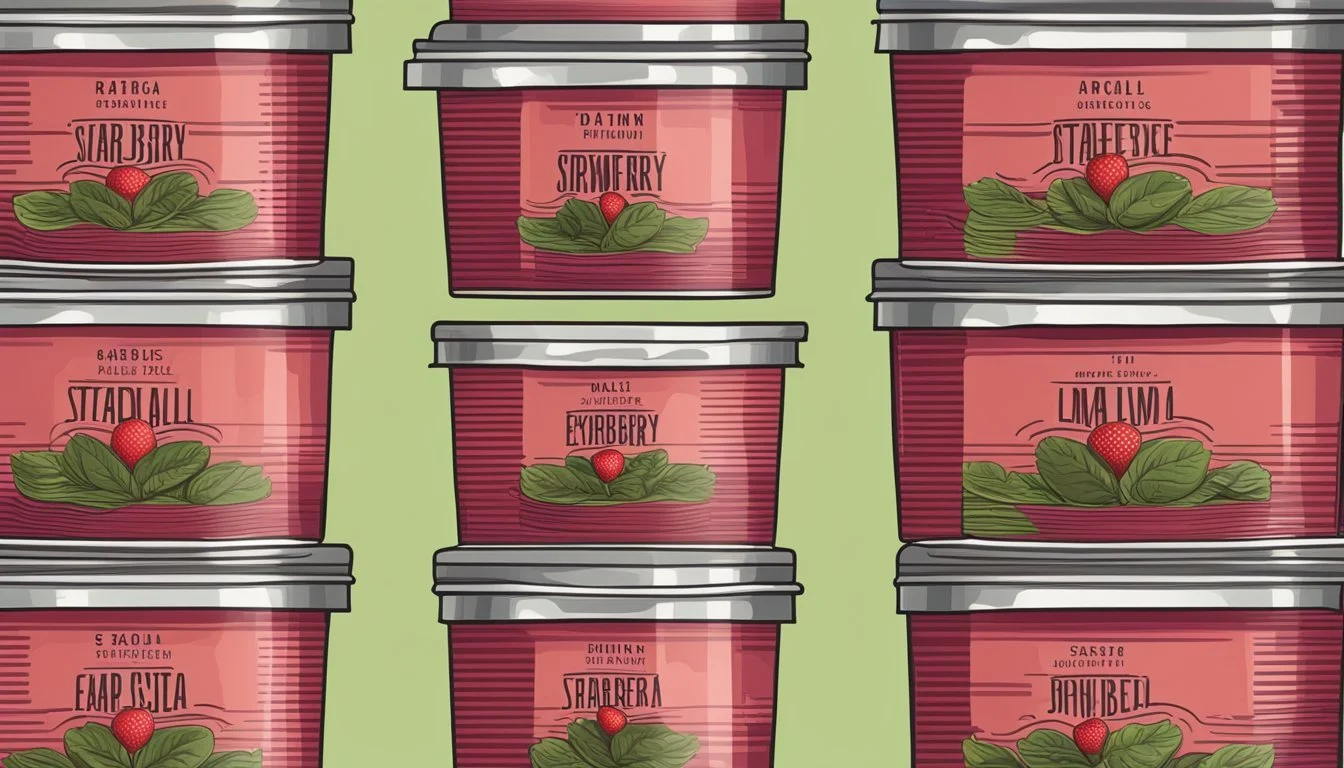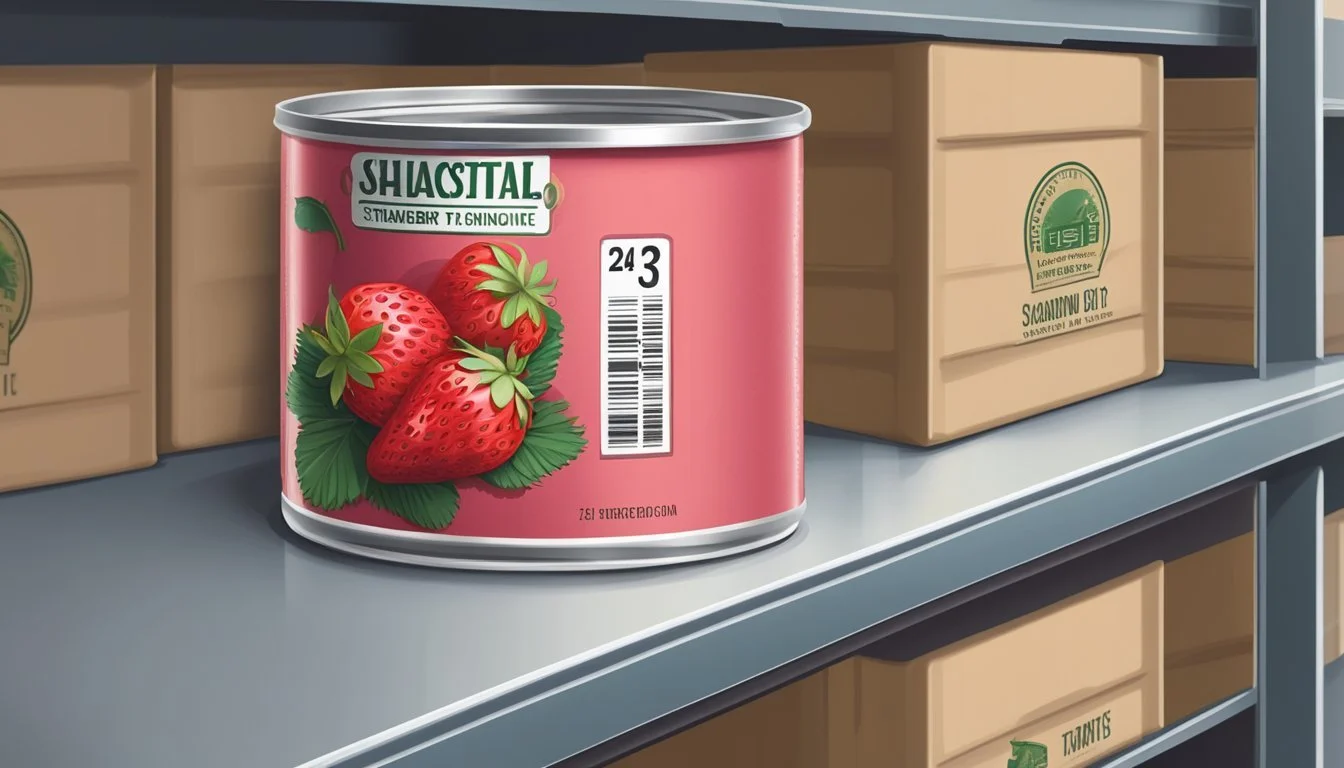How Long Does Canned Strawberry Paste Last?
Shelf Life and Storage Tips
The shelf life of canned strawberry paste is heavily influenced by storage conditions and the canning process itself. When properly canned and stored in a cool, dry place, strawberry paste can retain quality for up to one year, although it remains safe to consume well beyond that period. Quality here refers to the taste, color, and nutritional content of the paste, which are best when consumed within the first year.
It is crucial to ensure that the canning method used creates a vacuum seal, which prevents microbial growth and keeps the product safe for consumption. Over time, there may be natural changes in texture and flavor, but these do not necessarily indicate spoilage. If the can appears undamaged and the paste smells and looks as expected, it is generally considered safe to consume.
Consumers should look for any signs of spoilage such as mold, off-odors, or bulging cans, which are clear indicators that the strawberry paste should not be used. Regular checks on home-preserved foods ensure that any problematic cans are discarded promptly. Commercially canned strawberry paste will often have a best-by date, which gives an indication of the period for peak quality, as recommended by the manufacturer.
Understanding Canned Strawberry Paste
Canned strawberry paste, when prepared and stored properly, offers a shelf-stable way to enjoy strawberries year-round, preserving their nutritional value and flavor.
Canning Basics
The process of canning involves placing foods like strawberry paste into jars and heating them to temperatures that eliminate spoilage-causing organisms. This process is essential for high-acid foods like strawberries, which are naturally acidic enough to be processed in a water bath canner. They typically require processing times ranging from 5 to 15 minutes, depending on the recipe and jar size, to ensure safety and longevity. Properly canned strawberry paste, stored in a cool, dry place, is best consumed within one year for optimal taste, although it may still be safe to eat beyond this period.
Nutritional Profile
Strawberry paste retains most of the nutritional benefits of fresh strawberries, which are a good source of Vitamin C, manganese, and dietary fiber. The canning process may lead to a loss of some heat-sensitive nutrients, but essential minerals and water-soluble vitamins are largely preserved. It is important for consumers to be aware that the canning process often involves adding sugar, which increases the calorie content of the resulting paste.
Nutrient Effect of Canning Vitamin C May decrease slightly due to heat exposure Manganese Remains mostly intact Fiber Preserved Calories May increase due to added sugars
Canned strawberry paste is a practical option for those looking to maintain a stock of this fruit without compromising its nutritional benefits.
Storage Guidelines
For canned strawberry paste, maintaining its quality depends on proper storage. Specific conditions can significantly extend its shelf life.
Optimal Storage Conditions
To preserve the integrity of canned strawberry paste, it should be stored in a cool, dry place such as a pantry. The ideal temperature for storage is between 50°F and 70°F. This range helps to prevent spoilage and keeps the paste in its best condition. Direct sunlight and fluctuating temperatures should be avoided as they can cause the can to degrade, impacting the paste's quality.
Refrigeration Vs. Pantry
Once opened, canned strawberry paste's shelf life can be prolonged by refrigeration. The paste should be transferred to an airtight container if not consumed immediately and can be safely stored in the refrigerator for up to 7 days. Unopened cans, however, should be kept in the pantry to maintain optimal quality. In general, an unopened can of strawberry paste can last 1-2 years if stored correctly. Always check the best by date for an initial reference point and examine the can for any signs of damage or spoilage before use.
Determining Shelf Life
When assessing the shelf life of canned strawberry paste, it is imperative to consider both the indicated expiration date and the various factors that can affect longevity. This ensures both quality and safety are maintained.
Expiration Date and Safety
Canned strawberry paste typically includes a best-by date which consumers can use as a guideline to determine optimal quality. Although the product may still be safe for consumption past this date, it is most favorable to consume it before the best-by date to enjoy the best flavor and texture. Safety is paramount, and signs of spoilage such as a bulging can, leakage, or off odors indicate that the canned strawberry paste should not be consumed, regardless of the expiration date.
Factors Affecting Shelf Life
Several key factors play a role in the shelf life of canned strawberry paste:
Storage conditions: Consistent, cool temperatures away from direct light can prolong shelf life. The ideal storage condition is a temperature between 50°F and 70°F (10°C - 21°C).
Seal integrity: A can's seal must remain uncompromised to ensure the longest possible shelf life. Any corrosion or damage can lead to spoilage.
Acidity: Strawberry paste is acidic, which, in a well-sealed can, can actually help preserve the contents for longer periods.
Regular monitoring of canned goods for any potential signs of spoilage is recommended. Maintaining proper storage conditions and not consuming the paste beyond the expiration date can help prevent foodborne illnesses.
Recognizing Spoilage
When dealing with canned strawberry paste, it's crucial to recognize the signs of spoilage to ensure food safety and prevent the risks of foodborne illnesses. Consumers should be vigilant for any indicators that the product has been compromised.
Signs of Spoiled Strawberry Paste
Visual Indicators: Strawberry paste should maintain a consistent color and texture. The presence of mold or significant color changes can indicate spoilage.
Can Integrity: A can that is bulging, leaking, or dented can compromise the sterile environment inside, allowing bacteria to grow.
Odor: Any off-putting or unusual smells once the can is opened are a clear warning sign.
Risks of Consuming Spoiled Contents
Food Poisoning: Spoiled strawberry paste may harbor harmful bacteria, increasing the risk of food poisoning.
Botulism: This serious illness can result from consuming food containing the toxin produced by the bacterium Clostridium botulinum. Cans showing signs of bulging may suggest the presence of this toxin.
Food Waste: Understanding spoilage signs helps in reducing food waste by ensuring only safe, unspoiled food is consumed.
Using Strawberry Paste
Preserved strawberry paste offers an intense concentration of flavor that can add a fresh fruit essence to a variety of dishes throughout the year.
Culinary Applications
Strawberry paste is versatile in the kitchen, lending its rich, sweet, and tangy taste to a variety of culinary applications. It’s especially popular as:
Spread on Toast: Ideal as a quick breakfast option or a sweet snack.
Filler for Pastries: Enhances the flavor when added to pastries and pies.
A chef might emphasize its use in desserts to create a more dynamic taste profile or as a topping for various baked goods to introduce a fresh strawberry note.
Incorporating into Recipes
When adding strawberry paste to recipes, it’s more than just stirring it into the mix. Here’s how one might incorporate it effectively:
Pancakes and Waffles: Blend the paste into batter for a fruity twist or dollop atop for a flavor-packed syrup alternative.
Sauces: Whisk the paste into dressings or sauces to add complexity to savory dishes.
One can enrich a simple jam by incorporating strawberry paste for a deeper berry flavor, or revitalize baked goods with a spoonful of the paste, ensuring every bite carries the essence of fresh strawberries.
Home Canning Strawberry Paste
In home canning, especially for strawberry paste, attention to detail is critical to ensure safety and quality. Below is a structured guide covering essential equipment and techniques, best practices, and answers to common questions regarding home canning of strawberry paste.
Equipment and Techniques
Home canning requires specific equipment to ensure the preservation process is done correctly. For strawberry paste, one needs canning jars, a water bath canner, canning lids, and a tool to create a vacuum seal. Before starting, the canner should fill with enough water to cover the jars by 1 to 2 inches and brought to a rolling boil. Jars should be sterilized, and lids prepared according to manufacturer's instructions.
Canning Jars: Use jars free from any chips or cracks.
Lids: Ensure the sealing compound is intact.
Water Bath Canner: A large deep pot with a rack to elevate the jars from the bottom.
Best Practices for Home Canning
To achieve the best results with home canning strawberry paste:
Preparation: Wash and sterilize all equipment. Prepare the strawberry paste according to a tested and safe recipe.
Filling the Jars: Leave appropriate headspace according to the recipe, as this ensures a proper vacuum seal.
Processing: Submerge jars in the boiling water bath canner for the time specified by the recipe. Adjust for altitude as necessary.
Cooling: Let jars cool undisturbed for 12-24 hours to allow seals to form.
Note: It is important to store home-canned strawberry paste in a cool, dark place to maintain quality.
Common Questions
How long does home-canned strawberry paste last? Properly canned and stored, strawberry paste can last up to a year for optimal quality, though it remains safe to consume beyond that if there are no signs of spoilage.
How does one know if a vacuum seal forms correctly? Lids should not flex up and down when the center is pressed, indicating a proper seal.
How can one ensure safety during canning? Always use recipes from trusted sources that have been tested for safety, never deviate from processing times, and use the right acidity levels.








